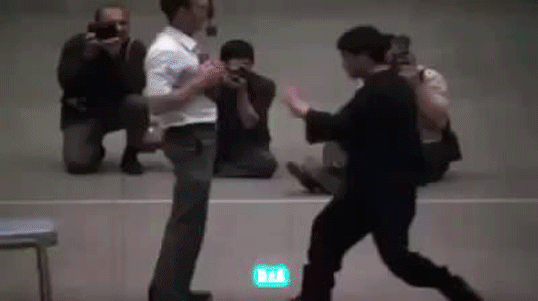1 is better than 1, 2.Planting the lead foot before landing the rear hand reverse punch allows you to shift more weight to the front foot, transferring more weight into the opponent for more power.
If you punch after your leading foot landing, there will be a delay. If your opponent tries to sweep your leading leg when your leading leg land, he may take you down before your punch can land on him. Sometimes, that small delay window can decide who will be on the ground.

We train to obtain body unification. In this clip, he can land his left foot first and then kick afterward. He trains to coordinate foot landing and kick at the same time.

Last edited:


